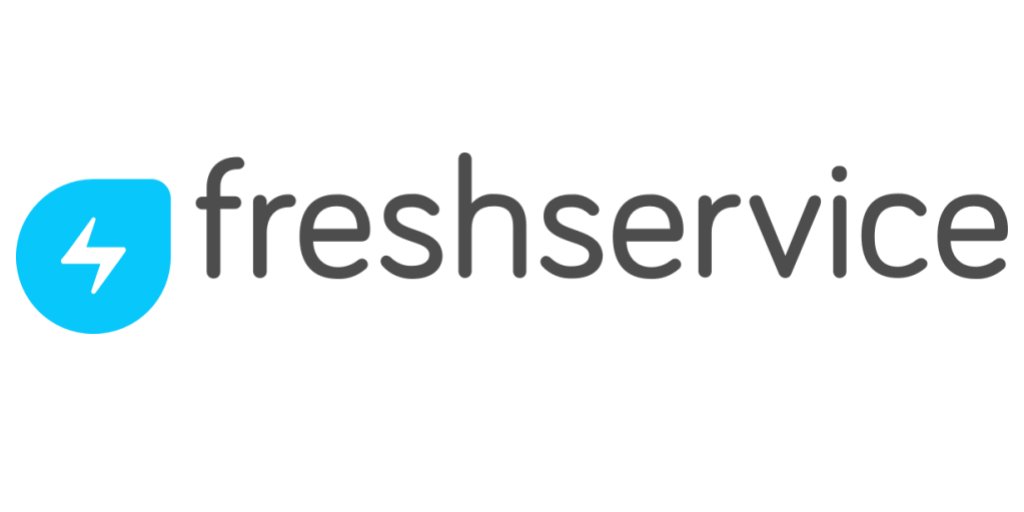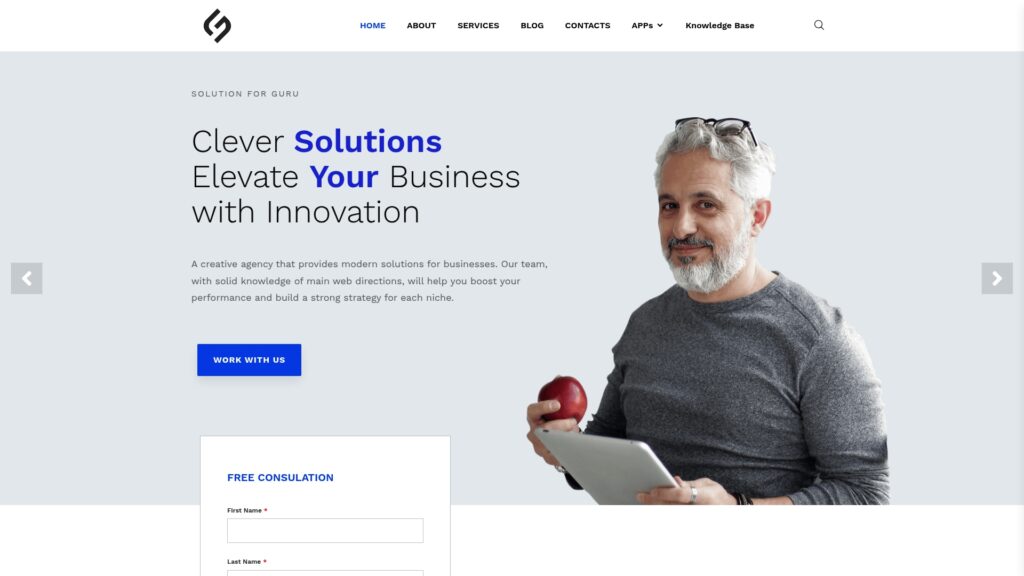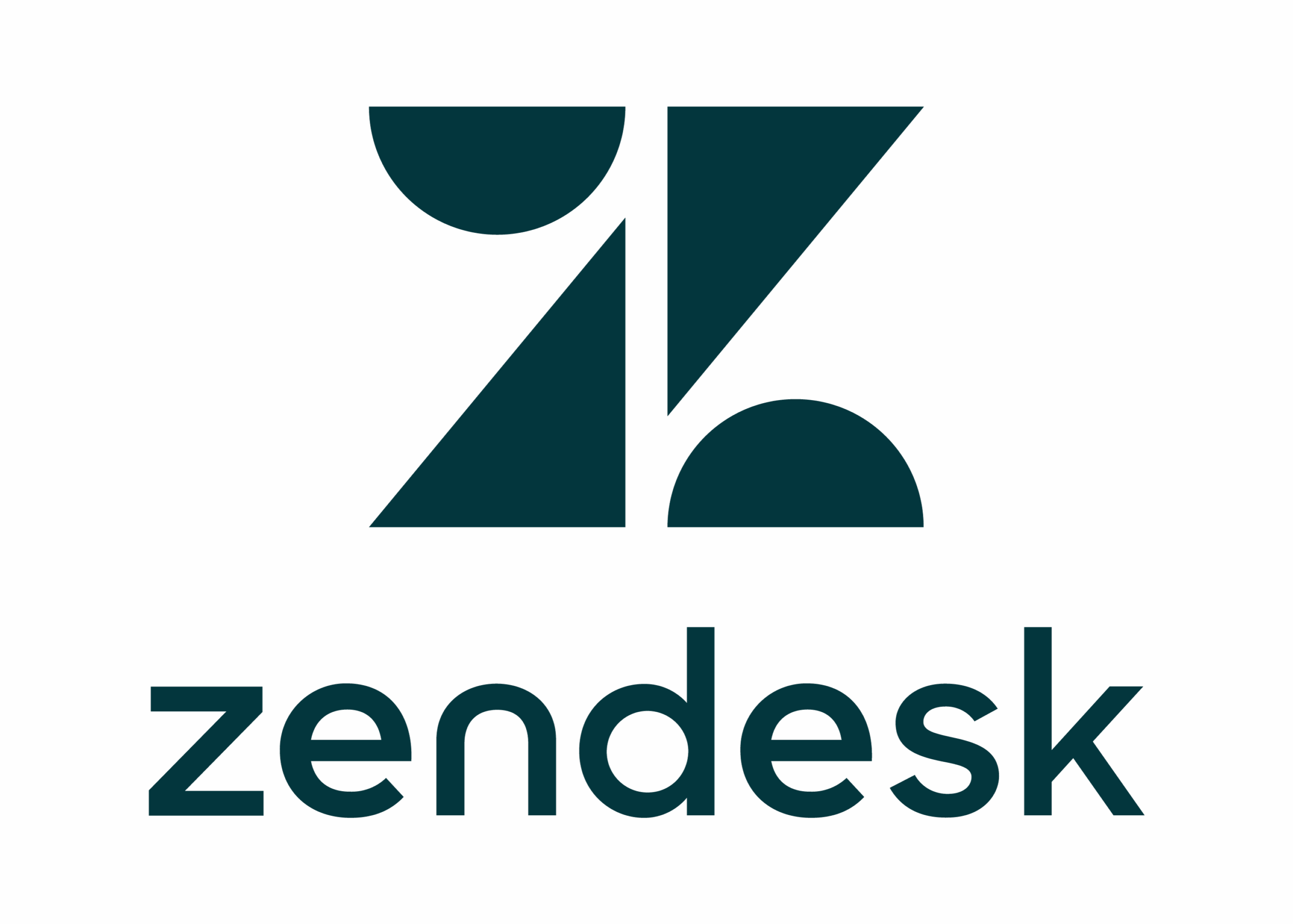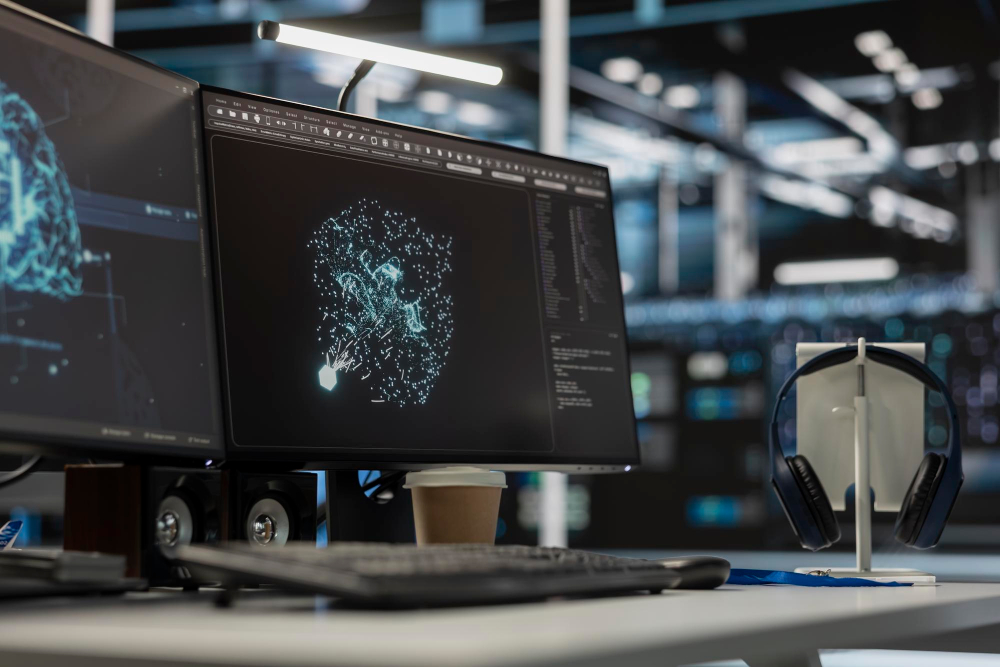What Are the Top Modern ITSM Trends to Watch?

The landscape of IT Service Management (ITSM) is evolving at an unprecedented pace, driven by technological advancements, changing workforce dynamics, and increasing demands for seamless digital experiences. Organizations worldwide are recognizing that traditional ITSM approaches are no longer sufficient to meet modern business challenges. Consequently, forward-thinking companies are adopting innovative strategies and leveraging cutting-edge technologies to transform their IT service delivery.
In this comprehensive guide, we’ll explore the most significant ITSM trends shaping the industry today, examine how leading platforms like Freshservice, ManageEngine, and Zendesk are adapting to these changes, and provide actionable insights to help your organization stay ahead of the curve.
Table of Contents
- Quick Summary
- What is ITSM and How Have Trends Changed Over Time?
- How Do Leading ITSM Platforms Address Modern Trends?
- Why Is AI and Automation Transforming ITSM?
- How Is the Employee Experience Reshaping ITSM Priorities?
- What Role Does Self-Service Play in Modern ITSM?
- Why Are Organizations Adopting Cloud-Based ITSM Solutions?
- How Are Analytics and Data-Driven Insights Changing ITSM?
- What Does the Future Hold for ITSM?
- Summing up
- Frequently Asked Questions
- Partnership with Solution for Guru
Quick Summary
Modern ITSM is undergoing a fundamental transformation driven by several key trends. Artificial intelligence and automation are revolutionizing service delivery, enabling predictive maintenance and intelligent ticket routing. Meanwhile, the focus has shifted from purely technical operations to comprehensive employee experience management. Cloud-based solutions have become the standard, offering scalability and flexibility that on-premises systems cannot match. Additionally, self-service portals are empowering end-users to resolve issues independently, reducing the burden on IT teams.
Furthermore, platforms like Freshservice, ManageEngine, and Zendesk are leading this evolution by incorporating advanced features such as machine learning algorithms, omnichannel support, and robust integration capabilities. Organizations are also embracing ITIL 4 principles, which emphasize value co-creation and continuous improvement. As data analytics becomes more sophisticated, IT leaders can make informed decisions based on real-time insights, ultimately driving better business outcomes.
What is ITSM and How Have Trends Changed Over Time?
Understanding ITSM Fundamentals
IT Service Management (ITSM) refers to the strategic approach organizations use to design, deliver, manage, and improve the way IT services are provided to customers and employees. Essentially, ITSM encompasses all activities involved in managing IT services throughout their lifecycle, from initial planning and design through deployment, operation, and continuous improvement. The primary objective is to align IT services with business needs while ensuring efficiency, quality, and customer satisfaction.
Traditionally, ITSM was heavily focused on incident management, problem resolution, and maintaining service level agreements (SLAs). Organizations relied on rigid frameworks and manual processes to handle IT requests and issues. However, this approach often resulted in slow response times, siloed departments, and limited visibility into service performance.
The Evolution from Past to Present
Over the past decade, ITSM has undergone a remarkable transformation. Initially, organizations primarily used ITSM for reactive troubleshooting and basic ticket management. The emphasis was on resolving technical issues as they arose, with limited focus on prevention or continuous improvement. Moreover, legacy systems were typically on-premises, requiring significant infrastructure investments and ongoing maintenance.
In contrast, contemporary ITSM takes a proactive and strategic approach. Modern organizations view ITSM as a critical enabler of digital transformation and business agility. The shift toward cloud computing has democratized access to sophisticated ITSM tools, allowing even small and medium-sized businesses to implement enterprise-grade solutions. Additionally, the integration of artificial intelligence, machine learning, and advanced analytics has enabled predictive capabilities that were previously unimaginable.
Another significant change is the expanded scope of ITSM. While traditional ITSM focused exclusively on IT departments, modern approaches extend service management principles across the entire organization. This evolution, often referred to as Enterprise Service Management (ESM), applies ITSM methodologies to HR, facilities, legal, and other business functions. Consequently, organizations are achieving greater consistency, efficiency, and collaboration across departments.
The workforce dynamics have also influenced ITSM evolution. With the rise of remote and hybrid work models, IT teams must support distributed employees across various locations and time zones. This shift has accelerated the adoption of mobile-friendly solutions, self-service capabilities, and 24/7 support options. Furthermore, employee expectations have changed dramatically. Today’s workers, accustomed to consumer-grade digital experiences, demand the same level of convenience and responsiveness from their corporate IT services.
How Do Leading ITSM Platforms Address Modern Trends?
Freshservice: Modern ITSM for the Digital Workplace

Freshservice has established itself as a leading cloud-based ITSM solution designed specifically for modern enterprises. Built with user experience at its core, Freshservice offers an intuitive interface that reduces the learning curve for both IT teams and end-users. The platform excels in providing a comprehensive suite of ITSM capabilities while maintaining simplicity and ease of use.
One of Freshservice’s standout features is its robust AI-powered automation engine, which streamlines repetitive tasks and enables intelligent ticket routing. The platform’s predictive analytics help IT teams identify potential issues before they escalate, supporting proactive service management. Additionally, Freshservice integrates seamlessly with numerous third-party applications, creating a unified ecosystem that enhances productivity and collaboration.
The platform addresses modern ITSM trends by offering extensive self-service capabilities through its knowledge base and service catalog. Employees can quickly find solutions to common problems without submitting tickets, significantly reducing the workload on IT support teams. Furthermore, Freshservice’s mobile application ensures that IT services remain accessible regardless of location, perfectly aligning with today’s distributed workforce requirements.
Freshservice also embraces the ITIL 4 framework, incorporating best practices for incident management, problem management, change management, and asset management. The platform’s analytics dashboard provides real-time visibility into service performance, enabling data-driven decision-making. Moreover, its flexible pricing model makes enterprise-grade ITSM accessible to organizations of all sizes.
ManageEngine: Comprehensive IT Management Suite

ManageEngine offers a comprehensive portfolio of IT management solutions, with ServiceDesk Plus serving as its flagship ITSM platform. What sets ManageEngine apart is its extensive feature set and deep customization capabilities, making it suitable for organizations with complex IT environments and specific requirements. The platform supports both cloud and on-premises deployments, providing flexibility for organizations with varying infrastructure preferences.
ManageEngine addresses modern ITSM trends through its emphasis on integration and unified management. The platform connects seamlessly with ManageEngine’s broader ecosystem of IT management tools, including network monitoring, endpoint management, and security solutions. This integration enables organizations to achieve comprehensive visibility across their entire IT infrastructure from a single pane of glass.
The platform’s AI-powered virtual assistant, Zia, represents ManageEngine’s commitment to automation and intelligent service delivery. Zia can handle routine queries, suggest solutions based on historical data, and even predict potential issues before they impact operations. Additionally, ManageEngine’s robust reporting and analytics capabilities provide deep insights into service performance, helping organizations identify improvement opportunities and demonstrate IT value to stakeholders.
ManageEngine also excels in asset management, offering detailed tracking and lifecycle management for hardware and software assets. This capability is particularly relevant as organizations navigate complex licensing agreements, remote work equipment distribution, and cybersecurity compliance requirements. Furthermore, the platform’s project management features enable IT teams to coordinate major initiatives and ensure alignment between IT services and business objectives.
Zendesk: Unified Customer and Employee Service Platform

While Zendesk initially gained prominence in the customer service space, it has evolved into a powerful platform for employee service management and ITSM. Zendesk‘s omnichannel approach enables organizations to provide consistent, high-quality support across multiple channels, including email, chat, phone, and social media. This flexibility is particularly valuable in today’s environment, where employees expect to interact with IT support through their preferred communication methods.
Zendesk addresses modern ITSM trends through its focus on conversation-driven support and seamless user experiences. The platform’s ticketing system is designed to feel more like a natural conversation than a formal service request, reducing friction and improving satisfaction. Additionally, Zendesk’s powerful automation and workflow capabilities enable IT teams to handle high volumes of requests efficiently without sacrificing quality.
The platform’s AI and machine learning features, powered by Zendesk Answer Bot and advanced intent detection, help users find solutions quickly while reducing the number of tickets requiring human intervention. These intelligent capabilities continuously improve through machine learning, becoming more accurate and effective over time. Moreover, Zendesk’s marketplace offers thousands of integrations and apps, allowing organizations to customize their ITSM environment to meet specific needs.
Zendesk‘s analytics and reporting tools provide comprehensive insights into service performance, agent productivity, and customer satisfaction. The platform’s benchmarking features enable organizations to compare their performance against industry standards, identifying areas for improvement. Furthermore, Zendesk’s commitment to data security and compliance ensures that sensitive information remains protected, addressing critical concerns in today’s regulatory environment.
Why Is AI and Automation Transforming ITSM?
The Power of Intelligent Automation
Artificial intelligence and automation represent perhaps the most transformative trend in modern ITSM. These technologies are fundamentally changing how IT services are delivered, enabling organizations to handle increasing service volumes without proportionally expanding their support teams. Intelligent automation goes beyond simple rule-based workflows, incorporating machine learning algorithms that adapt and improve over time based on historical data and outcomes.
AI-powered chatbots and virtual agents now serve as the first line of support for many organizations, handling routine inquiries and guiding users through troubleshooting steps. These intelligent assistants are available 24/7, providing immediate responses regardless of time zones or business hours. Consequently, employees receive faster resolutions while IT teams can focus on more complex, strategic initiatives that require human expertise and creativity.
Predictive Analytics and Proactive Service Management
Moreover, predictive analytics powered by AI enables IT teams to shift from reactive to proactive service management. By analyzing patterns in historical incident data, system performance metrics, and user behavior, AI algorithms can identify potential issues before they cause disruptions. For example, if a server shows signs of degradation, the system can automatically trigger preventive maintenance, avoiding costly downtime and service interruptions.
Platforms like Freshservice, ManageEngine, and Zendesk have integrated sophisticated AI capabilities that continuously learn from every interaction. These systems can predict ticket categories, suggest relevant knowledge base articles, and even recommend solutions based on similar past incidents. This intelligent assistance not only accelerates resolution times but also improves consistency and accuracy across the service desk.
Intelligent Ticket Routing and Prioritization
Another significant advantage of AI in ITSM is intelligent ticket routing and prioritization. Traditional systems often rely on manual assignment or simple rule-based distribution, which can result in inefficient workload allocation and delayed responses for critical issues. In contrast, AI-powered routing analyzes multiple factors, including ticket content, requester information, agent expertise, current workload, and historical resolution patterns to assign tickets optimally.
This intelligent approach ensures that tickets reach the most qualified agent quickly, reducing resolution times and improving first-contact resolution rates. Additionally, AI can automatically adjust ticket priorities based on business impact and urgency, ensuring that critical issues receive immediate attention while lower-priority requests are handled appropriately. These capabilities directly translate to improved service quality and higher user satisfaction.
Automation of Repetitive Tasks
Furthermore, automation extends beyond ticket management to encompass numerous routine tasks that previously consumed significant IT resources. Password resets, software provisioning, access requests, and system updates can now be automated, eliminating manual intervention and reducing the potential for human error. ManageEngine, for instance, offers extensive workflow automation capabilities that enable organizations to create sophisticated automated processes tailored to their specific requirements.
The cumulative impact of these automation capabilities is substantial. Organizations implementing AI-powered ITSM solutions typically report significant reductions in average resolution times, decreased ticket volumes through self-service deflection, and improved agent productivity. Moreover, by automating routine tasks, IT professionals can dedicate more time to strategic projects, innovation, and continuous improvement initiatives that drive business value.
How Is the Employee Experience Reshaping ITSM Priorities?

The Shift to Employee-Centric IT
The modern ITSM landscape has witnessed a fundamental shift from technology-centric to employee-centric approaches. Organizations increasingly recognize that IT services directly impact employee productivity, satisfaction, and overall business performance. Consequently, delivering exceptional employee experiences has become a top priority for IT leaders, influencing everything from tool selection to service design and delivery methodologies.
This transformation reflects broader trends in consumer technology, where user experience has become a primary differentiator. Employees, who interact with beautifully designed, intuitive consumer applications in their personal lives, naturally expect similar experiences from their corporate IT systems. Organizations that fail to meet these expectations face increased frustration, reduced productivity, and potential talent retention challenges.
Designing Intuitive Service Portals
Central to improving employee experience is the design of intuitive, user-friendly service portals that make it easy for employees to request services, report issues, and find information. Modern ITSM platforms like Freshservice and Zendesk prioritize clean, contemporary interfaces that minimize complexity and guide users through processes seamlessly. These portals often incorporate familiar design patterns from consumer applications, reducing the learning curve and improving adoption.
Effective service portals go beyond aesthetics, offering personalized experiences based on user roles, departments, and previous interactions. For example, an employee might see customized service catalog items relevant to their position, personalized knowledge base recommendations based on past searches, and status updates on their active requests. This level of personalization demonstrates that the organization values employees’ time and understands their needs.
Omnichannel Support and Accessibility
Additionally, modern employees expect to access IT support through their preferred communication channels, whether that’s email, chat, phone, mobile app, or even social messaging platforms. Zendesk excels in this area, providing truly omnichannel support that maintains conversation context across different channels. This flexibility ensures that employees can engage with IT services in ways that fit their workflows and preferences, rather than being forced into rigid, inconvenient processes.
Mobile accessibility has become particularly critical as remote and hybrid work models have become standard. Employees need to request services, check ticket status, and access knowledge resources from their smartphones and tablets, regardless of location. ITSM platforms that offer robust mobile applications and responsive web interfaces enable this flexibility, supporting productivity for distributed workforces.
Measuring and Improving Experience Metrics
To truly prioritize employee experience, organizations must measure it systematically and use those insights to drive continuous improvement. Modern ITSM platforms incorporate sophisticated survey capabilities, enabling IT teams to capture feedback at key touchpoints throughout the service journey. These surveys measure satisfaction, effort scores, and net promoter scores, providing quantitative data about employee perceptions.
ManageEngine and Freshservice both offer comprehensive analytics dashboards that track experience metrics alongside traditional operational metrics like resolution times and ticket volumes. This holistic view enables IT leaders to identify experience gaps, understand root causes, and prioritize improvement initiatives based on actual employee feedback. Furthermore, these platforms can trigger automated workflows based on negative feedback, ensuring that concerns are addressed promptly and proactively.
The focus on employee experience extends beyond the service desk to encompass the entire IT ecosystem. Organizations are evaluating all touchpoints, from onboarding processes to equipment provisioning to application performance, through the lens of employee experience. This comprehensive approach ensures that IT services truly enable and empower employees rather than creating friction and frustration.
What Role Does Self-Service Play in Modern ITSM?
Empowering Users Through Knowledge Management
Self-service capabilities have emerged as a cornerstone of modern ITSM strategies, fundamentally changing how employees interact with IT support. By providing comprehensive knowledge bases, intuitive search functionality, and guided troubleshooting tools, organizations enable employees to resolve many issues independently without submitting formal tickets. This approach benefits both employees, who receive immediate solutions, and IT teams, who can focus on more complex challenges requiring specialized expertise.
The foundation of effective self-service is robust knowledge management. Organizations must create, organize, and maintain high-quality knowledge articles that address common issues, answer frequently asked questions, and provide step-by-step instructions for various tasks. Freshservice offers powerful knowledge base capabilities with intelligent search algorithms that surface relevant articles based on user queries, dramatically improving the likelihood that employees will find solutions quickly.
Intelligent Search and AI-Powered Recommendations
Modern self-service goes beyond simple keyword matching, incorporating AI-powered search that understands context and intent. When an employee types a query, the system analyzes the text semantically, considering synonyms, related concepts, and even common misspellings to deliver accurate results. Additionally, these intelligent systems learn from user behavior, continuously improving their recommendations based on which articles successfully resolve issues.
ManageEngine and Zendesk both leverage machine learning to enhance self-service effectiveness. Their platforms can suggest relevant knowledge articles proactively based on ticket patterns, user roles, and even time of day. For example, if password reset requests spike every Monday morning, the system might prominently display password reset instructions on Monday mornings, reducing ticket submissions through strategic content placement.
Service Catalogs and Automated Fulfillment
Beyond troubleshooting, self-service portals provide access to comprehensive service catalogs that enable employees to request services, provision resources, and initiate workflows without IT intervention. Modern service catalogs present available services in user-friendly formats, with clear descriptions, eligibility criteria, and expected delivery timelines. Employees can request everything from software licenses to hardware equipment to access permissions through streamlined, intuitive interfaces.
The power of service catalogs is amplified when combined with automation. Many requests can be fulfilled automatically without requiring human approval or intervention. For instance, when an employee requests access to a standard application, the system might automatically verify their eligibility, provision the appropriate license, add them to relevant security groups, and send confirmation—all within minutes. This level of automation, available in platforms like Freshservice and ManageEngine, dramatically improves service delivery speed and consistency.
Chatbots and Virtual Agents
Conversational interfaces, including chatbots and virtual agents, represent the evolution of self-service capabilities. These AI-powered assistants engage users in natural language conversations, understanding requests, asking clarifying questions, and providing solutions or routing to appropriate resources. Unlike traditional self-service portals that require users to navigate menus and forms, chatbots offer a more intuitive, conversational experience that feels familiar to employees accustomed to consumer messaging applications.
Zendesk‘s Answer Bot and ManageEngine‘s Zia exemplify advanced virtual agent capabilities. These systems can handle complex queries, guide users through multi-step processes, and even execute actions on behalf of users when appropriate. Moreover, when virtual agents cannot resolve an issue, they seamlessly escalate to human agents with full context, ensuring continuity and preventing users from having to repeat information.
Why Are Organizations Adopting Cloud-Based ITSM Solutions?
The Compelling Business Case for Cloud
The migration from on-premises to cloud-based ITSM solutions represents one of the most significant technological shifts in IT service management. Organizations across industries and sizes are embracing cloud platforms due to their compelling advantages in cost, scalability, accessibility, and innovation velocity. Unlike traditional on-premises systems that require substantial upfront capital investment, ongoing maintenance, and periodic upgrades, cloud solutions operate on predictable subscription models with minimal infrastructure requirements.
Financial considerations often drive initial cloud adoption discussions. Cloud-based ITSM eliminates the need for costly hardware purchases, data center space, and dedicated IT staff to manage infrastructure. Instead, organizations pay monthly or annual subscription fees that cover software licensing, hosting, maintenance, security, and updates. This operational expenditure model improves cash flow, simplifies budgeting, and reduces total cost of ownership significantly compared to traditional deployments.
Scalability and Flexibility
Moreover, cloud-based platforms offer unparalleled scalability, enabling organizations to adjust capacity dynamically based on changing needs. During periods of rapid growth or seasonal fluctuations, organizations can quickly add users, increase storage, or expand capabilities without lengthy procurement and deployment cycles. This flexibility is particularly valuable in today’s volatile business environment, where agility and responsiveness provide competitive advantages.
Freshservice and Zendesk, as cloud-native platforms, exemplify this scalability advantage. Organizations can start with basic capabilities and expand gradually as needs evolve, adding modules, integrations, and advanced features without disrupting operations. ManageEngine offers both cloud and on-premises options, providing flexibility for organizations with specific regulatory requirements or infrastructure preferences. This approach also allows most customers to enjoy the benefits of cloud-based solutions.
Accessibility and Remote Work Support
The shift to remote and hybrid work models has accelerated cloud ITSM adoption dramatically. Cloud platforms provide secure access from anywhere with an internet connection, enabling distributed IT teams to deliver consistent support regardless of location. Employees can submit requests, access knowledge resources, and communicate with IT support seamlessly whether they’re working from home, traveling, or in the office.
This accessibility extends beyond basic functionality to encompass full-featured mobile applications. Modern ITSM platforms recognize that employees increasingly rely on smartphones and tablets for work-related tasks. Consequently, platforms like Freshservice offer comprehensive mobile experiences that enable users to perform virtually any action available on desktop versions, ensuring that IT services remain accessible and convenient for mobile-first workforces.
Automatic Updates and Continuous Innovation
Another significant advantage of cloud-based ITSM is automatic updates and continuous innovation. Unlike on-premises systems that require manual upgrades, often involving downtime and complex migration processes, cloud platforms deliver new features, security patches, and performance improvements automatically. Organizations benefit from the latest capabilities without dedicating resources to upgrade projects or worrying about compatibility issues.
This continuous innovation cycle means that cloud ITSM users gain access to cutting-edge features like AI-powered automation, advanced analytics, and enhanced integrations as soon as vendors release them. ManageEngine, Freshservice, and Zendesk all follow rapid release cycles, constantly introducing improvements based on customer feedback and emerging technologies. This approach ensures that organizations remain competitive and can leverage new capabilities to drive business value continuously.
How Are Analytics and Data-Driven Insights Changing ITSM?
From Reporting to Predictive Intelligence
The evolution of analytics capabilities in ITSM represents a transformation from backward-looking reporting to forward-looking predictive intelligence. Traditional ITSM reporting focused primarily on historical metrics like ticket volumes, resolution times, and SLA compliance. While these metrics remain important, they provide limited actionable insight for improving future performance or preventing issues before they impact operations.
Modern analytics platforms incorporate sophisticated techniques including predictive modeling, trend analysis, pattern recognition, and anomaly detection. These capabilities enable IT leaders to anticipate problems, identify improvement opportunities, and make data-driven decisions about resource allocation, training needs, and strategic investments. The shift from descriptive to predictive analytics fundamentally changes how organizations approach IT service management.
Real-Time Dashboards and Visibility
Real-time dashboards have become standard features in modern ITSM platforms, providing immediate visibility into service performance, team productivity, and user satisfaction. Unlike traditional reports that might be generated weekly or monthly, real-time dashboards update continuously, enabling rapid response to emerging issues or changing conditions. IT leaders can monitor key performance indicators, track progress toward goals, and identify trends as they develop.
Freshservice, ManageEngine, and Zendesk all offer customizable dashboard capabilities that enable organizations to visualize data in ways that align with their specific needs and priorities. Users can create role-based dashboards that surface relevant information for different stakeholders, from frontline agents who need ticket queue information to executives who want high-level performance summaries. This flexibility ensures that the right information reaches the right people at the right time.
Advanced Analytics and Machine Learning
Beyond basic reporting, advanced analytics capabilities leverage machine learning algorithms to uncover insights that might not be apparent through manual analysis. These systems can identify patterns in incident data that suggest underlying problems, predict future ticket volumes based on historical trends and external factors, recommend optimal resource allocation, and even forecast the impact of proposed changes before implementation.
ManageEngine’s analytics engine, for example, can analyze complex relationships between incidents, problems, and changes, helping organizations understand root causes and implement effective preventive measures. Similarly, Freshservice‘s predictive analytics can forecast service desk workload, enabling proactive staffing decisions and resource planning. These capabilities transform IT service management from reactive firefighting to strategic, proactive optimization.
Business Impact Analysis
Modern ITSM analytics extend beyond operational metrics to measure business impact and value delivery. Organizations increasingly need to demonstrate how IT services contribute to business outcomes, justify investments, and align technology initiatives with strategic objectives. Advanced analytics platforms enable this connection by correlating IT metrics with business KPIs, calculating the financial impact of incidents and outages, and measuring the return on investment for IT initiatives.
For instance, organizations can analyze how service disruptions affect employee productivity, calculate the cost of downtime for critical business applications, or measure the efficiency gains from automation initiatives. Zendesk‘s analytics platform includes sophisticated benchmarking capabilities that enable organizations to compare their performance against industry standards, identifying areas where they excel and opportunities for improvement.
What Does the Future Hold for ITSM?

Comparative Analysis: Platform Readiness for Future ITSM Trends
To help organizations evaluate how leading ITSM platforms are positioned for future trends, the following table compares Freshservice, ManageEngine, and Zendesk across key emerging capabilities:
Emerging Technologies and Innovations
The future of ITSM promises even more transformative changes as emerging technologies mature and become mainstream. Artificial intelligence will continue evolving beyond current chatbot and automation capabilities toward more sophisticated cognitive systems that can handle complex reasoning, understand nuanced context, and adapt to unique situations. These advanced AI systems may eventually handle the majority of service requests autonomously, with human agents focusing exclusively on the most complex, sensitive, or creative challenges.
Moreover, technologies like augmented reality (AR) and virtual reality (VR) may revolutionize remote support capabilities. Technicians could use AR to guide end-users through troubleshooting procedures with visual overlays, or support specialists could virtually “see” remote equipment to diagnose and resolve issues more effectively. While these applications remain somewhat nascent, early adopters are already exploring their potential to transform technical support delivery.
Hyperautomation and Low-Code Platforms
Hyperautomation – the comprehensive, end-to-end automation of business processes using multiple technologies – represents another significant trend shaping ITSM’s future. Organizations will increasingly orchestrate multiple automation technologies including robotic process automation (RPA), AI, machine learning, and business process management to create sophisticated, adaptive workflows that span multiple systems and business functions.
Low-code and no-code development platforms will democratize automation and customization, enabling business users without extensive programming skills to build workflows, create integrations, and customize interfaces. Platforms like Freshservice and ManageEngine already incorporate low-code capabilities, and this trend will accelerate as organizations seek greater agility and reduced dependence on specialized development resources.
Predictive and Prescriptive Service Management
Furthermore, ITSM will evolve from reactive and proactive approaches toward truly predictive and prescriptive service management. Predictive capabilities will anticipate issues before they occur, while prescriptive capabilities will recommend specific actions to prevent problems or optimize performance. These capabilities, powered by increasingly sophisticated AI and machine learning, will enable IT teams to prevent the majority of service disruptions rather than simply responding to them efficiently.
For example, future ITSM platforms might analyze patterns indicating that a server will fail within 48 hours and automatically initiate maintenance procedures, order replacement components, and notify relevant stakeholders—all without human intervention. Similarly, systems might detect that specific employees are experiencing productivity impacts from application performance issues and automatically optimize resources or recommend alternative workflows.
Expanded ESM and Business Integration
The expansion of Enterprise Service Management beyond IT will accelerate, with service management principles and tools supporting virtually every business function. Organizations will recognize that the methodologies proven effective for IT service delivery apply equally well to HR, finance, legal, facilities, and other departments. Consequently, platforms that successfully support this expansion while maintaining simplicity and usability will gain significant competitive advantages.
This ESM evolution will drive tighter integration between ITSM platforms and core business systems, creating unified service delivery ecosystems that span the entire organization. Zendesk‘s flexible platform architecture positions it well for this trend, as does Freshservice‘s increasingly comprehensive ESM capabilities. Organizations will benefit from consistent processes, unified data, and improved collaboration across traditional departmental boundaries.
Sustainability and Green IT
Finally, sustainability considerations will increasingly influence ITSM practices and platform selection. Organizations committed to environmental responsibility will seek ITSM tools that help optimize resource utilization, reduce energy consumption, extend equipment lifecycles, and minimize electronic waste. Cloud-based platforms inherently offer sustainability advantages through shared infrastructure and economies of scale, but vendors will increasingly differentiate themselves through specific sustainability features and transparent environmental reporting.
Summing up
The ITSM landscape has undergone a remarkable transformation, evolving from rigid, process-centric approaches to flexible, experience-focused strategies that leverage cutting-edge technologies. Modern organizations recognize that effective IT service management is not merely about resolving technical issues efficiently – it’s about enabling business success, empowering employees, and creating competitive advantages through superior service delivery.
Throughout this comprehensive exploration of modern ITSM trends, several critical themes have emerged. First, artificial intelligence and automation are fundamentally reshaping service delivery, enabling organizations to provide faster, more consistent support while freeing human agents to focus on complex, high-value activities. Second, the shift toward employee-centric approaches reflects broader recognition that IT services directly impact productivity, satisfaction, and business outcomes. Organizations that prioritize employee experience in their ITSM strategies consistently achieve better results than those focused solely on operational efficiency.
Integration and unified platforms have emerged as critical differentiators, breaking down organizational silos and enabling seamless workflows across technology ecosystems. Advanced analytics capabilities transform raw data into actionable insights, supporting both operational optimization and strategic decision-making. Furthermore, security and compliance have become paramount concerns, with leading platforms implementing comprehensive protection mechanisms and compliance features to address evolving threats and regulatory requirements.
Looking ahead, emerging technologies like advanced AI, hyperautomation, AR/VR, and low-code platforms promise even more transformative changes. Organizations that stay informed about these trends, carefully evaluate platform capabilities, and strategically implement modern ITSM solutions position themselves for sustained success in an increasingly digital, competitive business environment.
Frequently Asked Questions
While all the trends discussed are significant, AI-powered automation arguably represents the most transformative opportunity for immediate impact. Organizations implementing intelligent automation typically see dramatic improvements in resolution times, ticket deflection rates, and agent productivity within months of deployment. Furthermore, automation capabilities create a foundation for addressing other trends effectively, enabling better self-service experiences, more proactive management, and improved employee satisfaction. Platforms like Freshservice, ManageEngine, and Zendesk all offer robust automation features that organizations can implement incrementally, starting with simple workflows and progressively expanding to more sophisticated use cases as capabilities mature and teams gain experience.
Modern ITSM trends are absolutely relevant and accessible for organizations of all sizes. In fact, cloud-based platforms have democratized access to enterprise-grade ITSM capabilities that were previously available only to large organizations with substantial IT budgets. Small and medium-sized businesses often benefit even more dramatically from automation, self-service, and analytics capabilities because these organizations typically have limited IT staff and resources. By implementing modern ITSM solutions, smaller organizations can deliver service quality comparable to much larger competitors while operating efficiently with lean teams. Platforms like Freshservice and Zendesk offer pricing tiers specifically designed for smaller organizations, with flexible licensing models that enable businesses to start small and scale as they grow. Moreover, cloud deployment eliminates infrastructure requirements and reduces implementation complexity, making modern ITSM practical and cost-effective for organizations across the size spectrum.
Partnership with Solution for Guru
Partnering with experts accelerates ITSM success. Implementing modern ITSM solutions and realizing their full potential requires specialized expertise, strategic planning, and ongoing optimization. This is where partnering with experienced consultants can make the difference between adequate deployment and transformative implementation that delivers measurable business value. Solution For Guru (https://www.solution4guru.com/) specializes in helping organizations navigate their ITSM journey. Find a lot of interesting information, useful tips and answers to your questions about ITSM on the resource.

By partnering with Solution for Guru, organizations gain not just technical expertise but strategic guidance that ensures ITSM investments drive meaningful business outcomes and competitive advantages.
Recommended:
- ITSM Change Management
- ITSM Integration: Streamlining IT Service Management for Modern Enterprises
- ITSM Problem Management
- What Are ITSM Ticketing Tools?
- ITSM Jobs: Your Guide to a Thriving Career in IT Service Management
- Why are ITSM Best Practices essential?
- What is an IT Management Service Provider?
- Comprehensive Guide to ITSM Tools: Features, Benefits, and Top Solutions
- What is IT Service Management (ITSM)?




